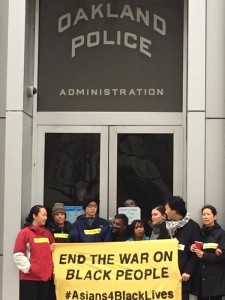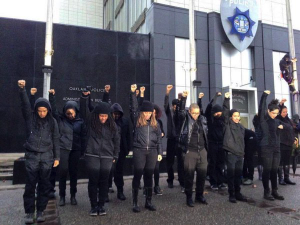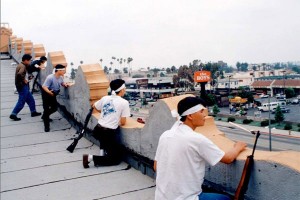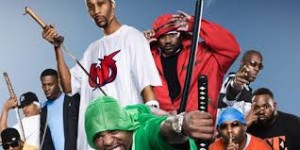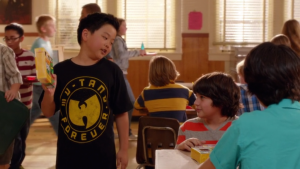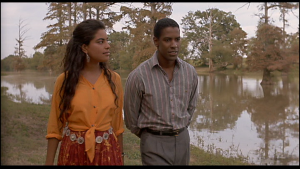O.J. Simpson
On October 3, 1995 Orenthal James Simpson (O.J.) was found “not guilty” of the murders of Nicole Brown and Ron Goldman after only four hours of deliberation. The response from the American people was split. Many white audiences stared in shock and disbelief while black audiences cheered and celebrated the verdict. What was a huge miscarriage of justice to white people felt like vindication and validation to black people. It proved that the LAPD was corrupt and racist towards Black people. But Simpson’s acquittal only benefitted Simpson and did nothing for relations between the Black community and the  LAPD, a community Simpson had erased from his life in pursuit of fame, fortune, and celebrity.
LAPD, a community Simpson had erased from his life in pursuit of fame, fortune, and celebrity.
Before Simpson stepped into the spotlight for the murders of Brown and Goldman, he was already a household name. Simpson first found fame as a college running back at the University of Southern California.[1] An NCAA record  breaker and a Heisman Trophy winner, Simpson shined as the darling of USC football. He later went on to play professional football with the Buffalo Bills and the San Francisco 49ers, breaking records along the way. During his time in professional football, Simpson became the spokesman for Hertz, the rental car service, and Chevrolet which bolstered his rise to fame. Simpson retired from football in 1979 to pursue other career options.
breaker and a Heisman Trophy winner, Simpson shined as the darling of USC football. He later went on to play professional football with the Buffalo Bills and the San Francisco 49ers, breaking records along the way. During his time in professional football, Simpson became the spokesman for Hertz, the rental car service, and Chevrolet which bolstered his rise to fame. Simpson retired from football in 1979 to pursue other career options.
Simpson’s time in the national spotlight came during the Civil Rights Movement. However, Simpson made sure to stay far from racial conflict. Simpson not only declined to take a stand, he claimed ignorance to the racial upheaval around him. In an interview, when a reporter asks Simpson about the 1968 Summer Olympics boycott, he had “no comment.”[2] Simpson endeavored to live his life colorless, erasing his blackness and just being allowed to live as a man. In Ezra Edelman’s documentary O.J.: Made in America, a friend comments that Simpson was “seduced by white society.” This erasure of color from Simpson’s life meant that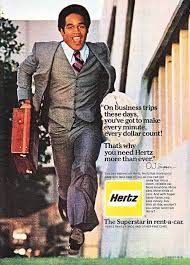 he could be palatable to the white world he wanted to take part in. In a commercial for Hertz, Simpson was depicted running through the airport, surrounded by white people cheering him on.[2] Much of Simpson’s adult life mirrored this Hertz commercial. For many of the white people in Simpson’s life, he was one of the few black people they knew, and they were all rooting for him. Simpson had been completely immersed in the world of whiteness, leaving his blackness behind. So, how did Simpson come to symbolize the struggle of Black America during his murder trial?
he could be palatable to the white world he wanted to take part in. In a commercial for Hertz, Simpson was depicted running through the airport, surrounded by white people cheering him on.[2] Much of Simpson’s adult life mirrored this Hertz commercial. For many of the white people in Simpson’s life, he was one of the few black people they knew, and they were all rooting for him. Simpson had been completely immersed in the world of whiteness, leaving his blackness behind. So, how did Simpson come to symbolize the struggle of Black America during his murder trial?
Two years before the murders and Simpson’s trial captured national attention, the eyes of the world were rivetted on Los Angeles awaiting the verdict of the LAPD cops responsible for the Rodney King beating. King’s beating was caught on camera and the cry for justice could not be ignored. The abuse the LAPD heaped on the Black community had been documented and reported for decades and had gone unanswered. Many believed that though the King beating was unfortunate because it was recorded and shared with the world, there would finally be justice for a community terrorized by the LAPD. The resulting ‘not guilty’ verdict shocked and angered many. The Black community raged at the blatant miscarriage of justice and took to the streets spawning riots that would last four days. The violence was not a response to just the King verdict; it had been brewing for decades. The L.A. riot may have been cathartic, but it was not justice. The LAPD and racial inequality still won.
Though Simpson had abandoned the black community, for many represented the height of success for a black man. Simpson’s football prowess rocketed him to the wealth and power black men rarely see, especially a black man coming up from poverty and government housing. Simpson may have tried to erase his blackness, but for black people he was a role model and something to reach for. Even black people understood that Simpson’s acceptance by a white audience was responsible for his status. Simpson had made it despite being a black man in white America. When Simpson was arrested for the murders of Brown and Goldman, much of black America was ready to root for him.
With the “Dream Team” consisting of Johnny Cochran, Robert Shapiro, F. Lee 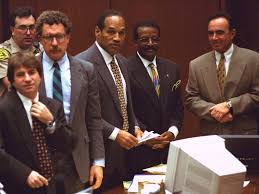 Bailey and a few other high-powered attorneys at his side, the trial began in January 1995. Marcia Clark and Christopher Darden were the District Attorneys prosecuting the case and built a case on the evidence collected at the crime scene and Simpson’s estate. But it was not enough. The world watched as Cochran and the Dream Team presented a defense that alleged mishandling of evidence and mishandling of evidence by the prosecution’s star witness, Mark Fuhrman. A trial that should have been about the science quickly turned into one about race and the history injustice and racism by the LAPD against black people. Johnnie Cochran spent the next year reconstructing O.J.’s blackness and building him as a symbol of racial injustice. Even though Simpson had not concerned himself with being Black in America, Black people rallied around him when it appeared he was being railroaded by the LAPD. While race was not the only reason the prosecution lost its case, it was the most defining. In a poll by the L.A. Times, 65% of whites believed Simpson was guilty, but 77% of blacks believed he was innocent.[3] In an interview for Edelman’s documentary, juror Carrie Bess asserts that Simpson’s acquittal was payback for the Rodney King beating and acquittal, but another juror denies this instead saying the prosecution lost the case because it was weak. But maybe it was a bit of both.
Bailey and a few other high-powered attorneys at his side, the trial began in January 1995. Marcia Clark and Christopher Darden were the District Attorneys prosecuting the case and built a case on the evidence collected at the crime scene and Simpson’s estate. But it was not enough. The world watched as Cochran and the Dream Team presented a defense that alleged mishandling of evidence and mishandling of evidence by the prosecution’s star witness, Mark Fuhrman. A trial that should have been about the science quickly turned into one about race and the history injustice and racism by the LAPD against black people. Johnnie Cochran spent the next year reconstructing O.J.’s blackness and building him as a symbol of racial injustice. Even though Simpson had not concerned himself with being Black in America, Black people rallied around him when it appeared he was being railroaded by the LAPD. While race was not the only reason the prosecution lost its case, it was the most defining. In a poll by the L.A. Times, 65% of whites believed Simpson was guilty, but 77% of blacks believed he was innocent.[3] In an interview for Edelman’s documentary, juror Carrie Bess asserts that Simpson’s acquittal was payback for the Rodney King beating and acquittal, but another juror denies this instead saying the prosecution lost the case because it was weak. But maybe it was a bit of both.
–– A. Latson
[1]https://www.biography.com/people/oj-simpson-9484729
[2]Edelman, Ezra. O.J.: Made in America.
[3]Decker, Cathleen. “THE TIMES POLL: Most in County Disagree with Simpson Verdicts.” Los Angeles Times. 8 October 1995.

